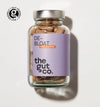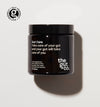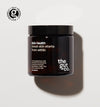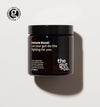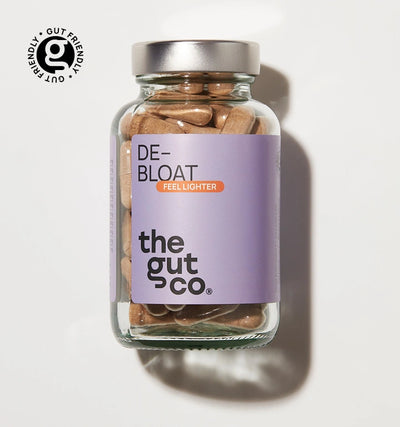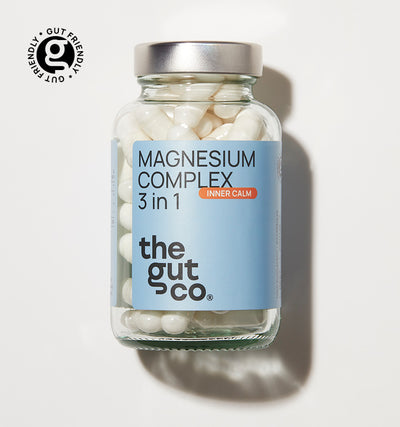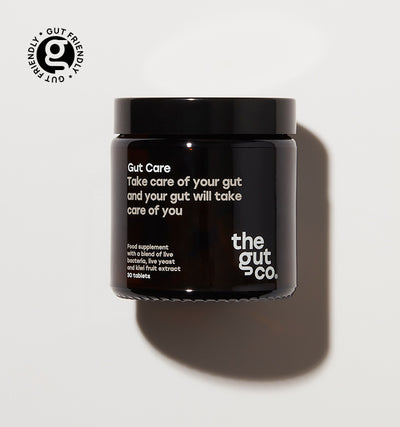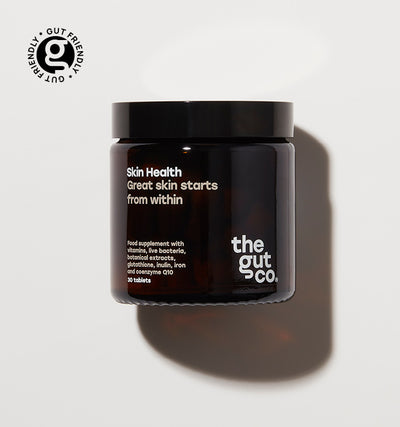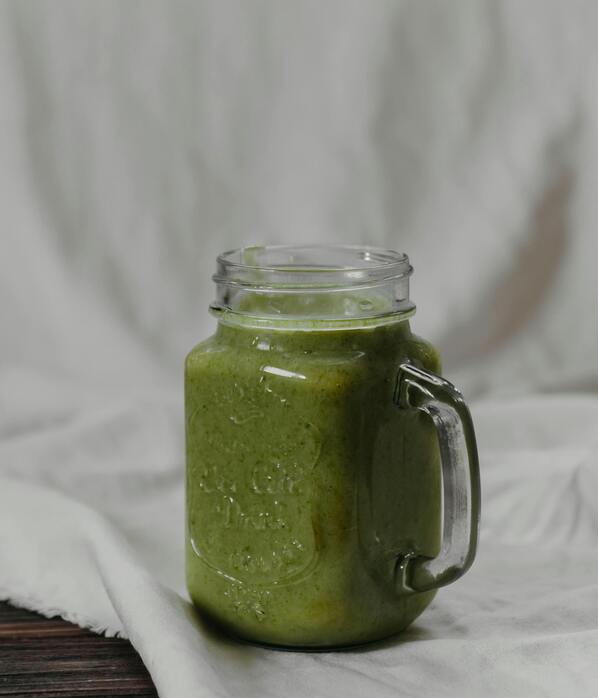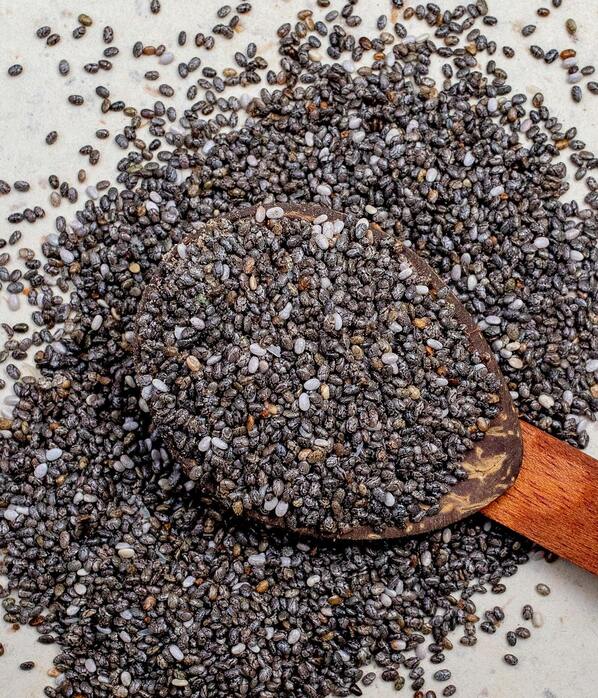Eczema and Gut health: Is there a Link?
Date:
22 May 2022

What is Eczema?
Eczema is a chronic inflammatory skin condition that affects people of all ages and is very common.1 It is often caused by the body's immune system overreacting to minor irritants or allergens.
This overreaction causes the skin to become inflamed in those areas.2 Eczema is often referred to as atopic dermatitis, although there are other forms of eczema too.
Eczema comes in different forms including:2
- Atopic dermatitis
- Contact Dermatitis
- Dyshidrotic eczema
- Nummular eczema
- Seborrheic dermatitis
- Stasis dermatitis
Usually, the symptoms of eczema are dry and itchy skin, rashes, scaly patches of skin, blisters on the skin and skin infections. Itchy skin is the most common symptom of eczema.2
The most common place for eczema is on the hands; 31.6 million Americans have hand dermatitis, equating to 20-35% of all cases in the US.3 Eczema is more commonly found in children than adults. For most people, eczema begins in childhood.
In fact, 70% of cases begin in children under the age of 5, with 60% of these people continuing to have one or more symptoms in adulthood. Globally, 20% of children and 3% of adults have eczema of some kind.
What Causes Eczema?
The cause of eczema can vary and is not limited to but does include immune system issues, genetics, environmental triggers or stress.2
Weather can impact eczema symptoms - low humidity drying out the skin and high heat causing sweating can also irritate the skin.
Environmental factors such as tobacco smoke, air pollutants, harsh soaps, some fabrics like wool, and particular skin products. Stress can also have an impact on eczema.4
What are the Different Types of Eczema and Treatments?
Atopic Dermatitis
Atopic dermatitis is the most common form of eczema. “Atopic” means an inherited tendency to develop dermatitis, asthma, and hay fever. “Dermatitis” means that the skin is itchy and red.5
Atopic dermatitis usually begins in early childhood and can continue into adulthood, although the flare-ups are generally less severe. The more a person scratches the red, itchy skin, the worse it gets typically.
A clear fluid sometimes leaks from the area. The rash can become scaly as it crusts over. It will usually appear in places such as the elbow creases, behind the knees, cheeks or the bum.5
Treatment
Emollients can be used daily to limit the impact of dry skin. Topical corticosteroids can be used to reduce symptoms during flare-ups. Antihistamines may be used to calm severely itchy areas. The area may also be covered in bandages to limit scratching and allow the skin to heal underneath.6
Usually, these treatments will combat the symptoms well. If these are not cutting it, a Doctor or a dermatologist should be consulted for more specialist treatment.6 If the area is infected, the Doctor may recommend antibiotic creams or tablets to eliminate the infection.
The FDA has recently approved a new injection called Dupilumab. It is a type of antibody created in a laboratory. It can be used to treat those with severe atopic dermatitis who do not respond to other treatments. It is new and costly, so it will usually be used as a last resort.7
Dyshidrotic Eczema
Dyshidrotic eczema - also referred to as pompholyx - will usually be found on the palms of the hands, sides of the fingers and soles of the feet. Symptoms will often occur for months or years at a time, which can be painful and irritating for the sufferer.8
Although the cause is unknown, it is believed that contact with strong chemicals like soaps, cleansers and detergents could be the cause. An allergy to metals such as nickel or cobalt could also cause.
Heat, sweat, and regularly having wet hands could cause symptoms. These triggers should be avoided by wearing gloves to limit contact on the skin to limit the impact.9
These symptoms can include:8
- fluid-filled pustules and small blisters. These appear in clusters or can merge into bigger ones.
- The skin can become intensely itchy, painful and have a burning sensation.
- The skin can become red and scaly as the blisters dry out.
- The skin can appear dry and cracked.
- The skin where the blisters were can appear abnormally thick afterwards
Treatment
Emollients can be used daily to stop the skin from becoming dry. Topical steroids may be used for short periods to reduce irritation and limit symptoms. When the blisters leak fluid, a Doctor may recommend soaking the affected area in a potassium permanganate solution.9
This causes the blisters to dry out and limits the risk of infection. If they become infected, the Doctor may prescribe antibiotics to calm the infection.9
If these treatments are ineffective, a dermatologist may be consulted. Steroid tablets may be prescribed for short-term use to reduce or eliminate the infection. Light therapy may also be used on the affected area, where the skin is exposed to ultraviolet light. The dermatologist may give alitretinoin capsules if the eczema is severe.9
Contact Dermatitis
Contact dermatitis happens when the skin directly contacts something that causes a rash, such as a substance or material. There is no correlation between contact dermatitis and hayfever or seasonal allergies.
Research has suggested that there is also no link between genetic predisposition and contact dermatitis, whereas other forms of eczema do share a link. It is most common for those who often touch irritants, such as hairdressers, cleaners and carers.8
The symptoms can be:
- Mild to severe itchy skin
- Red, dry or cracked skin that is painful, swollen or tender
- Blisters
- A bumpy rash
Treatment
The usual treatment for contact dermatitis will be emollients. These can be used frequently and in large amounts. The type of emollient that will be most effective can vary from person to person.
For dry skin, an ointment, a cream or lotion can be used; for less dry skin, an emollient soap substitute if soap is an irritant, and varying emollients for different body parts such as hands, face and body can be used.10
If the skin is inflamed, topical corticosteroids may be prescribed to apply to the affected area. The strength of the cream or ointment will depend on the site and the severity of the symptoms. Steroids (corticosteroid tablets) may be prescribed if a large skin area is affected by contact dermatitis.10
A doctor may refer the patient to a dermatologist for further treatment if these are ineffective treatments. They may use light therapy, where the affected area of the skin is exposed to ultraviolet light.
Immunosuppressant medicines may be given to reduce inflammation by suppressing the immune system. If severe contact dermatitis is present on the hands, alitretinoin capsules may be provided to alleviate the symptoms.10
Nummular Eczema
Nummular eczema can also be referred to as nummular dermatitis or discoid eczema. It is a treatable form of eczema that causes coin-shaped spots to develop on the skin.
It will usually appear after an injury to the skin, such as a burn or an insect bite, but there can be other causes, too. The spots that occur can be in just one patch or multiple patches of the coin-shaped lesions and may last for several months.11
The symptoms of the coin-shaped spots are:
- Spots that are often very itchy and well-defined.
- Spots that ooze clear fluid
- Spots that become dry and crusty
This form of eczema is more commonly found in men than women. For men, symptoms will usually show after the age of 50. For women, it will usually show up before the age of 30. Children who suffer from severe atopic dermatitis may develop nummular eczema.11
Treatment
Treatments can vary depending on the severity of eczema and whether it has become infected. Emollients can be used constantly to treat the infected area, such as an ointment for dry skin, a cream or lotion, an emollient soap substitute, and varying emollients for different body parts.
Hypoallergenic soap substitutes can be used to replace irritant products. If the area is severely itchy, antihistamines can be used to combat the itch. Topical corticosteroids can be used for flare-ups, or a doctor can prescribe steroid tablets if the outbreak is severe. Antibiotics will be prescribed to calm the area if the area has become infected.12
Seborrheic Dermatitis
A seborrheic dermatitis is a form of eczema that usually appears on the scalp but can also appear on the nose, upper back, eyebrows, mid-chest, groin or armpits. This is due to many sebaceous glands in these areas, which produce a lot of oil.
The skin has an inflammatory reaction to excess Malassezia yeast. This is an organism that usually lives on the skin’s surface. When too much of it, the skin can react and cause seborrheic dermatitis.13
In infants, this is commonly referred to as ‘cradle cap’. In this case, it usually appears on the scalp or the bottom as scaly or greasy patches and will go away independently. In adults, it is most common in males between 30 and 60 and can reappear often.
Certain medical conditions can increase the risk of developing seborrheic dermatitis, including psoriasis, HIV, acne, alcoholism, eating disorders and Parkinson’s disease. It can also appear when a patient is recovering from a stroke or a heart attack. (13)
Triggers for seborrheic dermatitis can be certain medications such as psoralen, interferon and lithium. It can also be triggered by cold and dry weather, stress, illness, or harsh chemicals and products.13
Symptoms include:14
- Dandruff on your scalp, hair, eyebrows, or facial hair
- Patches of greasy skin covered with flaky white or yellow scales or crust
- Red skin
- Itching
Treatment
Many home remedies are recommended before seeking medical intervention for seborrheic dermatitis. Dandruff shampoos can be an effective treatment when used daily.
Over-the-counter antifungal or anti-itch creams are also readily available. Hypoallergenic soaps and detergents can be used to limit irritation. It can also be effective in shaving off facial hair, which can irritate. Wearing loose cotton clothing can limit irritation on the body.15
If home remedies aren’t cutting it, a Doctor can prescribe treatment options. Prescription-strength shampoos or ointments that contain hydrocortisone, fluocinolone or desonide can be applied directly to the affected area.
Antifungal medications can also be prescribed where necessary. These options can cause side effects, mainly when used for a prolonged period, so they should be used with caution. A cream or gel called metronidazole can also be prescribed to combat symptoms.15
A doctor may also prescribe a combination of psoralen and light therapy to manage symptoms. Psoralen can be taken orally or applied directly to the affected area. That area will then be exposed to ultraviolet light for a short period.15
In infants, ‘cradle cap’ doesn’t usually require treatment and will go away independently in up to 6 months. You can loosen the scales by massaging the baby’s scalp or with a soft-bristled brush to manage the symptoms.
The baby’s hair can also be washed with a mild shampoo, and the hair and scalp must be rinsed thoroughly. A tip for difficulty loosening the scales is to massage olive oil into the area before shampooing.15
Stasis Dermatitis
Stasis dermatitis can also be gravitational dermatitis, venous eczema and venous stasis. The cause of this form of eczema is poor circulation in the lower legs, which is known as venous insufficiency.
We have valves in our legs that help push blood back to the heart, and here, they weaken and leak fluid. This causes water and blood cells to pool in the lower legs.16
Venous insufficiency can be caused by underlying medical conditions such as heart or kidney disease but is most commonly caused by ageing. Our circulation becomes less effective as we age, so those over 50 are most likely to suffer from stasis dermatitis. It is also more common in women.16
It’s important to note that not everyone with venous insufficiency will develop stasis dermatitis, but poor circulation does increase the risk factor. Other risks can be varicose veins, high blood pressure, multiple pregnancies, a history of blood clots, obesity and vein surgeries.
Having very little physical activity, for example, having a job that involves hours of sitting or standing, can increase the risk of stasis dermatitis.16
Symptoms of stasis dermatitis:
- One or both legs being affected, or feet.
- Ankle swelling
- Orange-brown speckles of discolouration (capillaries bursting)
- Redness in lighter skin tones or brown, purple, grey or ashen in darker skin tones
- Itching
- Scaly skin
- Dryness
- Aching or heavy feeling after long periods of inactivity
Treatment
Unfortunately, the swelling can move beyond the ankle to the calf if stasis dermatitis goes untreated. The skin can become shiny in this area. Venous ulcers, which look like open sores, can form on the lower legs and the tops of the feet. These ulcers may bleed, ooze and leave scars.16
When stasis dermatitis is severe, it can cause permanent skin changes. These can be skin thickening, darkening, or hardening, or the skin can appear bumpy.16
Compression stockings can be used to reduce swelling in the legs and ankles. The legs may also be elevated above the heart every two hours to reduce swelling. This is to encourage blood flow to the area.
A topical or oral antibiotic can be prescribed if the skin is infected. A topical corticosteroid can be used to calm the inflammation of itchy skin that is red or discoloured.
Avoiding foods high in salt can help calm symptoms of stasis dermatitis. Vitamin C and Rutin supplements can also calm symptoms by keeping the blood vessels flexible and healthy, limiting venous insufficiency.
Final Thoughts
Different forms of eczema can have very similar symptoms. Still, a doctor will usually be able to diagnose the type just by looking at it due to their advanced medical training.
Eczema can be severe, irritating and debilitating. It can also be just a mild inconvenience; it all depends on the type of eczema, where it is, and how extreme the symptoms are.
There are many treatment options, but getting eczema diagnosed is essential to ensure you are trying the correct treatments that will work for you.
Please don’t suffer; get it looked at!
Related content: A Guide to the Gut-Skin Axis
References
- https://www.allergyuk.org/types-of-allergies/eczema/?gclid=CjwKCAjw6dmSBhBkEiwA_W-E
- oC0j5hKHPWiP587I_xjKs6Hu0QKbSTlWD_qJjK5YEQI7fJ8gCZO8cxoCUicQAvD_BwE https://nationaleczema.org/eczema/
- https://mg217.com/your-eczema/statistics/
- dermatitis)%20is%20caused,overreaction%20can%20inflame%20your%20skin.
- %20general%20term,Eczema%20is%20often%20very%20itchy.
- https://www.nhs.uk/conditions/atopic-eczema/treatment/
- https://www.mayoclinic.org/diseases-conditions/atopic-dermatitis-eczema/diagnosis-treatment/drc-20353279
- https://www.khealth.com/learn/eczema/types/
- https://www.nhs.uk/conditions/pompholyx/
- https://www.nhs.uk/conditions/contact-dermatitis/treatment/
- https://www.healthline.com/health/skin/nummular-eczema#:~:text=Nummular%20eczema%2C%20also%20known%20as,or%20become%20dry%20and%20crusty.
- https://www.nhs.uk/conditions/discoid-eczema/treatment/
- https://nationaleczema.org/eczema/types-of-eczema/seborrheic-dermatitis/
- https://www.mayoclinic.org/diseases-conditions/seborrheic-dermatitis/symptoms-causes/syc-20352710
- https://www.healthline.com/health/skin/seborrheic-dermatitis#on-other-areas
- https://nationaleczema.org/eczema/types-of-eczema/stasis-dermatitis/

